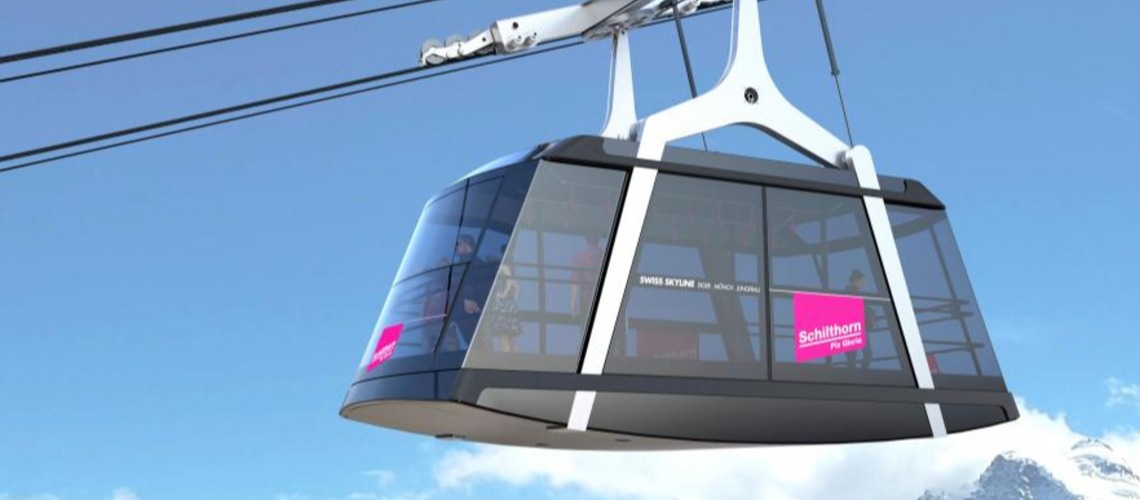Schilthorn: Photovoltaics On Birg - Highly Efficient Electricity Production Facility To Make Way For A New Building

For more than three decades, the southern facade of the Birg station was ultimately equipped with two photovoltaic systems. Their electricity production was very efficient due to the ideal positioning. Now both systems had to give way to the SCHILTHORNBAHN 20XX project. One of them has been modified and will continue to provide valuable electricity.
All stations of the aerial cableway are currently being built on the large-scale SCHILTHORNBAHN 20XX project. The old has to give way to the new, is being dismantled or relocated - this is also the case on Birg: for many years, two photovoltaic systems have adorned the south facade of the station at almost 2700 meters above sea level. Due to the perfect angle of incidence of the sun's rays, little fog and the reflection of the snow, the production of the two plants was above average, especially during the winter months. The clear, cool mountain air also contributed to the good performance, as solar cells are more efficient in the cold. The positioning on the vertical, south-facing wall of the station also contributed to the fact that the facilities could hardly ever freeze over or be covered by snow.
Highly efficient electricity production for over 30 years
Because of the construction of the new station, a new purpose had to be found for the systems: The older system was therefore completely dismantled. She did an excellent job for over 30 years. It was installed in 1992 by the association for the promotion of renewable energies and was considered a pioneering system, a visionary pilot project in the field of photovoltaics. It was the first grid-connected system at this altitude and was producing electricity until the end of April this year. Only the inverter has been replaced once over the years. How many of the modules actually still produce electricity after more than 30 years of operation is still being investigated, but it can already be said that most of the elements were still working.
Photovoltaic to support the energy management of the new railway
The second plant is 20 years younger and was financed by private initiators. It has remained privately owned to this day. The electricity you generate is fed into the public grid of the EWL Genossenschaft Lauterbrunnen via its own meter. In the future, photovoltaics will also play a role in the new energy system, which stores electricity independently and cost-effectively and makes it available at the right moment. With the energy-efficient hybrid battery system of the new aerial cableway, solar energy supports braking and generator energy. The system was installed at its new location on Birg within two days on a gray, cool day in mid-May with light snowfall. It produces around 10,000 kilowatt hours per year, i.e. the annual electricity consumption of one or two single-family houses.














